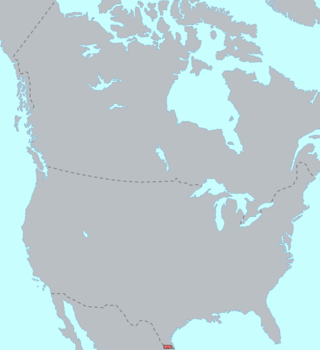(Redirected from Cotoname )
Extinct Pakawan language of North America‹ The template Infobox language considered for merging . ›
Cotoname is a Pakawan language spoken by Native Americans indigenous to the lower Rio Grande Valley of northeastern Mexico and extreme southern Texas (United States ). Today it is extinct .
All known primary witnesses to the Cotoname language were published in 2024.
Vocabulary
The following vocabulary list of Cotoname is from John Swanton (1940).
gloss
Cotoname
air
gurám
arm, right
katówan
arrow
ká-u
bad
kĕnáx, sá
bed
kắm
belly
kóx, kuwéle
below
éta
bird
komióm
bison
wiyá-u
black
baí (cf. night)
blade
ĕhiá-u
blanket, American
häwáss (cf. cold)
blood
sä'x
blow, to
pó-une
bow
kémma
boy
kuwósam
breast (female)
kĕnám
breechclout
xaguátema
buffalo
wiyá-u
cactus-fig
wámena
cane
ká-u
chair, a
náxe
chief
kapitán
cloth (a small piece of cloth)
huáxhe
cold
häwéss
come here!
sánxe
Comecrudo Aranguá, xaíma
cow
wiyá-u
crane
karakór
cry, to
páma
dance, to
okáwe
day
ō'
daybreak
káma
deer
kĕmás
die, to
wátĕxo
dog
kowá-u
drink, to
xuáxe
dust
pó-una
earth
pén
east
otá-ume
eat, to
haháme
evening
ovx
eye
arókwan
face
makuát
far
huánpa
feathers
kuwai
female
nan
fire
mánĕx
flesh
kĕmás
fog
máyen
food
haháme
foot
ayésim
fox
kissá
girl
kuwósam
go over there!
awóyo!
goat
kápĕra
good
kĕnáx
goose
krák
grass
suá-u
great
katám
gun
komióp
guts
kuwéle
hair
makuát
handkerchief
huáxhe
hare
gamáro
hat
garópa
head
makuát
high
katám
hog
esmók
horn
yómo
horse
kokátere
Indian, an
xaíma
infant
huwáxe
iron
komióp
Karankawa Aranguá
kill, to
wátxuka
knife
komiópo
knife (for cutting leather)
ĕhiá-u
land
pén
let us go!
awóyo
little
kuwósam
low (said of water)
xuắxe
maize
tawaló
maize-husk
wapxáp
male quadruped
yómo
man
xuaináxe
masticate, to
akwanámie
meat
kemás
mesquite -bushdán
metate komoí
milk
kĕnám
mouse
tsĕmáx
mud
pén
night
baí
no
sá
north
hayámta
nose
yá-ĕx
ox (young)
wiyá-u
painted (on body, face, etc.)
tháwĕ
peccary
kápio
Pintos (Indian tribe so called)
tháwĕ
pipe
pá-una
rabbit
kiáxhem
rat
tsĕmáx
red
msá-ĕ
reed
ká-u
rifle
komióp
Rio Grande riveráx̣, katám
river
áx̣, katám
run, to
mtára
salt
dá-än
scratch, to
átsiu
seat, a
náxe
sheep
séwuya
sing, to
koyáma
sit, to
páwe
sit down!
páwe
sleep, to
mátsĕkuka
small
kuwósam
smoke, to
pá-una, suá-u
snake
kiá-uxa
sombrero
garópa
south
séta
stand, to
páwia
star
kápra
stick
dópax
suck, to
huä'xle
sun
ō'
sweet
yáx
sweetmeats
yáx
tail (of animal)
ásuxuga
Tampacuás Indian
xaíma
tobacco
suá-u
tortilla
kamaplaí
tortoise
gapáx
tree
dópax
tuna
wámĕna
up the country
wéfta
velduque
ĕhiá-u
west
wéfta
what do you want?
titcháx mén?
water
áx̣
weep, to
xákue
west
wéfta
white
mesó-i
wind
gurám
wings
miápa
within
kuwéle
wolf
kombóx
woman
katám
See also
References
Barnes, Thomas C.; Naylor, Thomas H.; Polzer, Charles W. Northern New Spain: A Research Guide
Cotonamu .
Zenodo (2024), doi :10.5281/zenodo.13368224 .
Linguistic material from the tribes of southern Texas and northern Mexico.
External links
Categories :
Text is available under the Creative Commons Attribution-ShareAlike License. Additional terms may apply.
**DISCLAIMER** We are not affiliated with Wikipedia, and Cloudflare.
The information presented on this site is for general informational purposes only and does not constitute medical advice.
You should always have a personal consultation with a healthcare professional before making changes to your diet, medication, or exercise routine.
AI helps with the correspondence in our chat.
We participate in an affiliate program. If you buy something through a link, we may earn a commission 💕
↑
 Map indicating where Cotoname was spoken
Map indicating where Cotoname was spoken